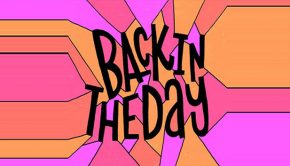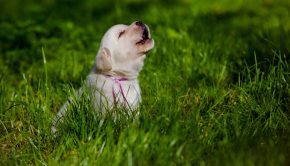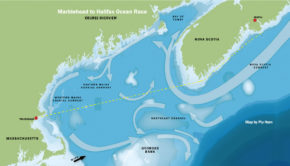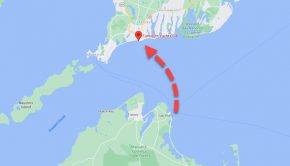Saved by extraordinary kindness
Published on March 29th, 2021
Avoiding collision requires visibility which is hard in the fog, and once was a whole lot harder before pinpoint navigation tools. But what doesn’t kill us makes us stronger and provides good stories… here’s one of them:
From John Kalish; Brussels, Belgium:
In mid-September 1981 I took my Dufour 27 Black Jack from the Hamble River to Villamoura, Portugal. It was the first stage of a delivery to Casablanca for the start of my first Transat des Alizés scheduled for mid-November. It was also my first ocean passage as skipper.
I had one crew, an Englishman with almost no sailing experience, but willing to help buy new halyards and sheets for Black Jack. I also had a very useful Autohelm tiller pilot.
It started auspiciously: sailing down Southampton Water, master of my boat, an earth shattering horn behind me advised that the QE II had right of way. We gybed; the boom whizzed past my head and cleanly took off my lucky Oakland As ball cap. Another inch and it could have been my head!
We sailed into a 15-18 knot westerly out the channel and a few days later, carefully following instructions in the Admiralty’s “Ocean Passages of the World”, I bore off SSW across Biscay for Cape Finistère.
The first part in Biscay was great, then a small NW gale joined us and sped us towards Finistère. My crew was not up to helming so I locked off the Autohelm and just trimmed for our course.
Morning brought the end of the gale and virtual calm. I checked my dead reckoning (DR) and radio direction finder (RDF) and saw that the gale had deposited us off Cabo Vilano right in the middle of the southbound lane of the Traffic Separation Scheme. No sooner than I had verified this than an impenetrable fog closed in.
What to do? We had a radar reflector, which I assumed worked, a VHF and a 5 MH receiver for shipping forecasts and connected to the RDF. I was confident as a DR navigator and the RDF was a good one.
There was almost no wind, so trying to sail didn’t make sense. Even if we could hear a ship’s engine approach, the time to get our engine running to maneuver might too long to prevent us from being run over. I opted for motoring: we wouldn’t hear a ship until it was almost on us, but at least we would have speed and maneuverability.
I set the Autohelm course due south, the speed at 4 knots, and issued my first ‘all ships’: “This is S/Y Black Jack. Course 180°, speed 4 knots. We have no radar. Please keep clear.”
There was no rest at all that day; I was on the edge of terror. We couldn’t see the bow of our boat! I re-issued the ‘all ships’ every 15 minutes. A couple times we got a response: a ship announced it was passing us to starboard or port at such and such distance. But the day began to fade and I wondered what the night would bring. I was exhausted. In between the ‘all ships’ I put my head down on the cabin table (also the chart table) and tried to close my eyes.
Night closed in and the minutes seemed like hours. Then, close to midnight, I got a clear radio response: “S/Y Black Jack. This is the Saudi Enterprise. We are a crude carrier, a half-mile to starboard of your track, southbound in ballast, making 8 knots. I have 27-mile radar, so I will be able to follow you for the next 10 hours. Don’t worry. I’ll look after you as long as I can.”
A miracle! I kept up the ‘all ships’, but less frequently. The Saudi Enterprise’s radio operator called regularly: “You have an ore carrier in ballast passing 1/2 mile to port at 9 knots.” Or: “Two coasters are overtaking you a quarter mile to port at 7 knots.”
By 10:00am the next day the sun had burned off the fog. We could see! And we had a light northerly breeze – about halfway down the Portuguese coast. Sails up; three hours to the west to get away from the shipping lanes. I slept 10 hours.
I got the radio operator’s name: Jacques Gudron – literally French for Jack Tar. (I never learned whether he was just having fun with me.) But I wrote to the ship’s owners and commended Mr. Gudron for his extraordinary kindness. I got a nice reply from the company and from “Jack Tar”.
We made it to Villamoura three days later. Arriving at sunset, we had to anchor off as the port entrance light was not functioning – the bulb had burned out and there was no replacement. No worries! The wine at lunch the next day made up for everything.









 We’ll keep your information safe.
We’ll keep your information safe.